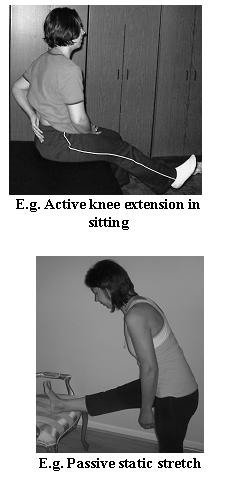Active vs Passive Stretching ...the Verdict!
Reference:Meroni R, et al Comparison of active stretching technique and static stretching technique on hamstring flexibility. Clin J Sport Med. 2010 Jan;20(1):8-14.
In this RCT, 65 healthy subjects completed a 6-week stretching program with them divided into 2 groups performing either daily active or passive stretching exercises.
ROM was measured after 3 and 6 weeks of daily stretching and again 4 weeks after the cessation of stretching. They compared their flexibility with the initial measurement.
Basic Results:
Degrees of improvement in Active knee extension range of motion test
……………………………After 3 weeks ….After 6 Weeks….. 4 Weeks after stretching stopped
Passive Stretching……………. 3�……………….. 5�……………….. 0�
Active Stretching ………………..6�………. ……….9� ………………..6�
……………………………(P = .006)……………. (P = .006)………… (P = .003)
In a Nutshell: Active stretching produced better improvements in flexibility, and the gain was better-maintained even 4 weeks after the end of the training, whereas for the passive stretching group, the gain in flexibility was lost after 4 weeks of not stretching.
Furthermore, compared to passive stretching, the subjects found the active stretching more time efficient and easier to comply with.
Posted on: July 05, 2011
Categories: Knee , Relevant Physical Therapy Articles


